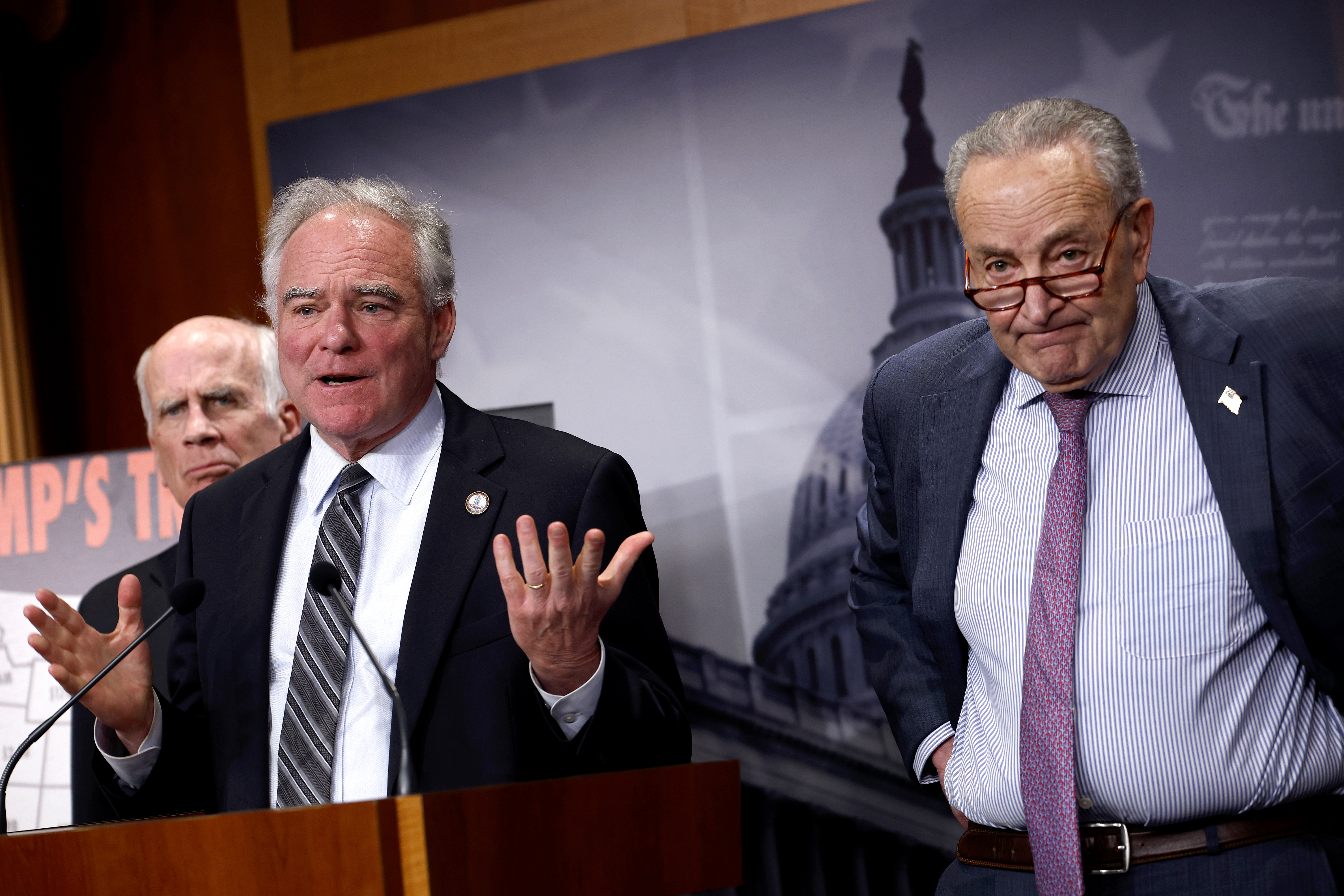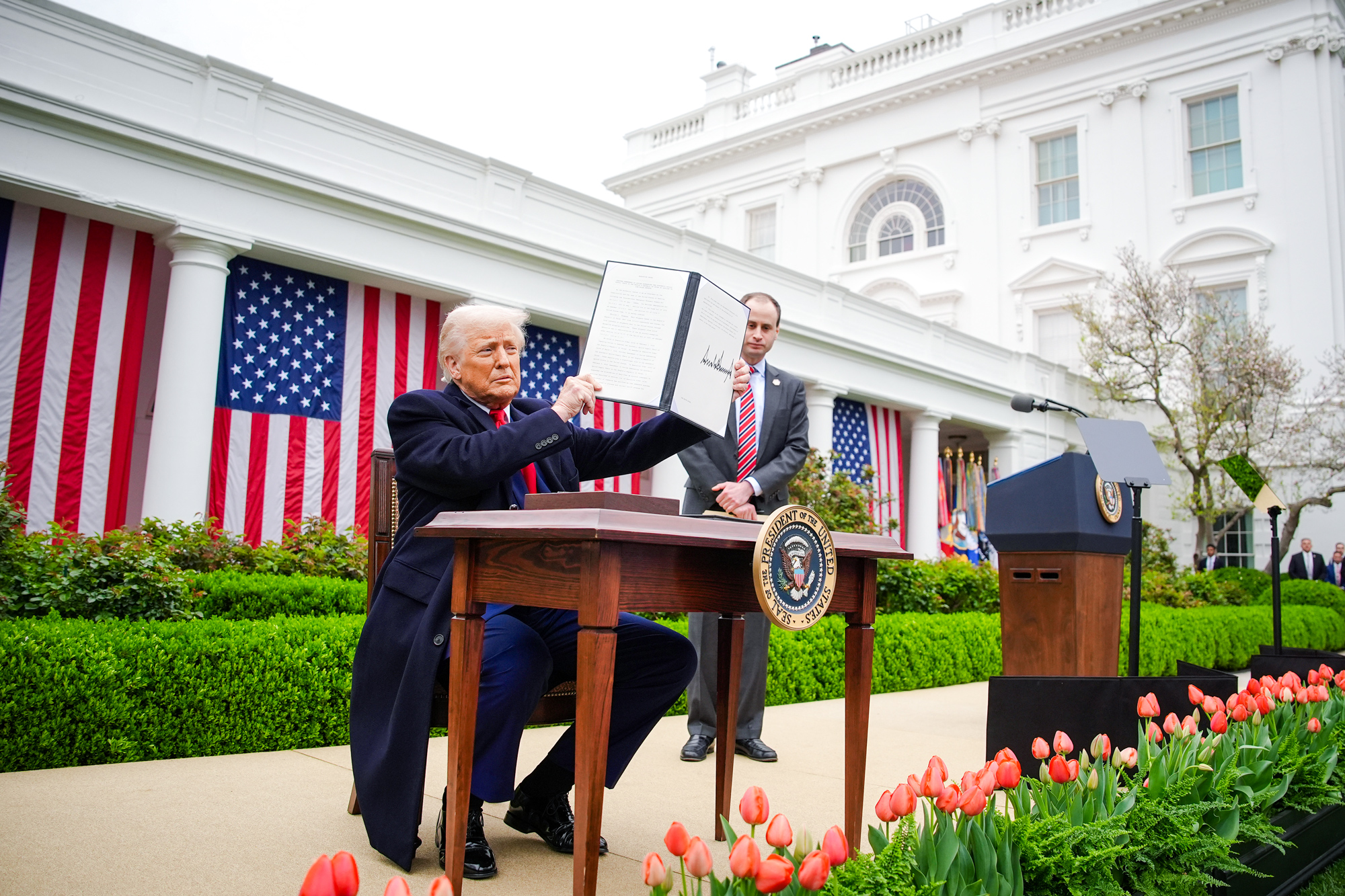Updated17 mins Ago
The U.S. will impose 10 percent universal tariffs, higher rates for countries with more trade barriers.
| Published Apr 03, 2025 | Updated Apr 03, 2025


Sen. Tim Kaine (D-Va.) (C) speaks alongside Senate Minority Leader Charles Schumer (D-N.Y.) (R) and Sen. Peter Welch (D-Vt.) at a press conference at the U.S. Capitol in Washington on April 2, 2025. Kevin Dietsch/Getty Images
Senate efforts to overturn President Donald Trump’s tariffs on Canadian goods entering the United States succeeded in a symbolic move.
S.J. Res. 37, legislation introduced by Sen. Tim Kaine (D-Va.) to scrap the 1977 International Emergency Economic Powers Act (IEEPA), was approved in a 51-48 vote.
Four Republicans—Sens. Rand Paul (R-Ky.), Susan Collins (R-Maine), Lisa Murkowski (R-Alaska) and Mitch McConnell (R-Ky.)—voted with Democrats to pass the measure.

President Donald Trump holds a signed executive order on reciprocal tariffs during an event in the Rose Garden at the White House on April 2, 2025. Saul Loeb/AFP via Getty Images
WASHINGTON—Just 72 days after taking office, President Donald Trump announced on April 2 sweeping trade policy changes, introducing what he called “reciprocal tariffs” for all countries and declaring it “Liberation Day in America.”
For decades, the United States has kept low trade barriers, promoting free trade agreements with minimal or zero tariffs—at least on its part. Those days are now over.
At a White House event, Trump presented a large chart outlining baseline and reciprocal tariff rates trading partners now face in attempts to balance their high trade barriers against U.S. goods. The rates include a flat 10 percent levy, along with additional rates tailored to match each nation’s trade barriers on America.

Previous live updates can be found here









